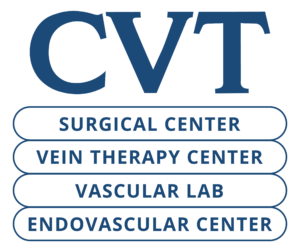Deep Venous Thrombosis or DVT are typically what people refer to when saying they have had “clots in their legs.”
These occur in the veins usually in the lower extremities. They can also occur in the upper extremities or any deep vein in the body. Patients will present with one sided arm or leg swelling and pain. These most commonly occur after times of immobility such as after surgery or long trips. Many patients describe the pain as a cramp that won’t go away. They can also occur spontaneously. Patients presenting with one sided leg swelling and pain should be ruled out for DVT. Typically, these are treated with blood thinning medications if possible.
Sometimes, in conjunction with medications there are procedures that our surgeons specialize in that can decrease clot burden and help with symptoms depending on the location of the clot. The most concerning complication of these blood clots is that they can break away and travel to different parts of the body. Most commonly, they will travel to the lungs which is called a pulmonary embolism. This condition can be very serious and even deadly. Patients can also get blood clots in superficial veins called superficial thrombophlebitis. These are usually tender and can be felt under the surface of the skin. This condition is usually able to be treated with over-the-counter medications but it is important to differentiate whether the blood clot is superficial or deep. This can be determined with non-invasive ultrasounds performed in our CVT vascular lab.

